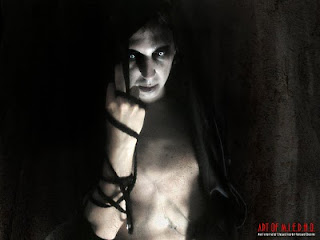
11 Mar MIEDHO – A Book Review in Quantum Culture
By curious circumstances, a friend put me in touch with the intriguing protagonist of this story, who goes by the acronym MIEDHO. After exchanging several polite messages, came the opportunity of writing a review of this monographic book of philosophical and artistic essays on his work. Curious to find out more about his work, I searched over the internet but only a few of his works are available online. As I was reading the book, I grew more and more curious and I must confess that now I feel the need to meet MIEDHO in person and have him show me some of his works, so I can see them for real and not on the web.
The book (MIEDHO, Niram Art Editorial) we are dealing with is a collection of essays on the artist, namely, on his point of view on society, the philosophy he abides by, some observations about his exhibitions, an interview and an artistic essay as final colophon. The persons behind the texts are Héctor Martínez Sanz, Diego Vadillo López, Bodgan Ater and MIEDHO himself.

MIEDHO
Undoubtedly, the storyline of this work is a profound and tough social criticism, a rebellion against the brutal alienation of the individuals who are born, grow up and die submitted to a continuous brainwash by means of the image and the messages that are constantly bombing us every single day, telling us what we should do or not do, what we should buy or not buy, turning us into little consumers from an early age. While I was reading the book, a terrible anecdote came to mind: a class of pre-school pupils was taken one day, as an extracurricular activity, to visit the premises of a known shopping center. It’s tragic. Therefore, I can state that I completely agree with the general idea transmitted throughout the book.
A different issue is the wonderful criticism of the authors on MIEDHO’s work, which, as I’ve already said, has aroused my curiosity. The exhibition “Eidolon”, a Greek word meaning image, phantasm, apparition, highlights one of the concepts that MIEDHO wants to convey, the alienation we suffer by means of the image. Another exhibition is based on the four elements, translated by MIEDHO into colours. To a certain degree, MIEDHO looks back at the pagan past of ancient Greece in a quest for a new Renaissance, by trying to recover the wise values of the ancients that we have long lost.
Unquestionably, as an Art Historian, the essay that I mostly liked is the one written by Bogdan Ater, because he is the first to link MIEDHO’s artistic works with several contemporary art references. I find the comparison he makes between MIEDHO’s work and Zdzislaw Beksinski’s highly interesting, given the personal admiration that I feel towards the work of this Polish artist.
This is where I’d like to emphasize some issues I consider important and which have been overlooked or omitted. I’m talking about enclosing MIEDHO’s art within the Gothic Movement. I’m completely sure that if anyone who presents himself as an artist puts forward the Gothic label, he will undoubtedly be bashed at first glance because of the evilness that society has bestowed upon us. Nonetheless, the ideology, MIEDHO’s work, – at least as far as I’ve come to know it – his dress code and the music he listens to – among others, Marilyn Manson and Rammstein – collides with my conception of what characterizes the Gothic Movement. As my readers well know, one of my latest initiatives is to highlight the value of the Gothic within academic circles, starting with the Congress of Gothic Art, Literature and Urban Culture – whose second edition will be held between 23rd – 25th of May at the Cultural Center La Corrala in Madrid- and the magazine Heresy and Beauty,which gathers the conferences of the above mentioned congress as well as other academic articles. Therefore, I believe that to consider oneself within a movement characterized precisely by this kind of social criticism and the contra cultural values that are expressed in the book is something one should feel proud of, and not conceal. At least, this is how I feel.
Another issue that I’d like to emphasize is that MIEDHO’s work should not be analyzed in an isolated fashion; it should be enclosed within an entire series of creators who have followed the same ideological patterns as MIEDHO. I recall many artists who, although formally, technically and iconographical different, are in the same line with MIEDHO’s fine work, such as Raúl Moreira, María Menéndez, Alonso Urbanos, Rage Against World, Mara Hernández…Many of them participated in the Exhibition Pre-Raphaelite Dream (the online catalogue can be found on Mentenebre website)
After these clarifications, I’d like to recommend this book because you’ll see that it connects with a feeling, which I feel as general, of all of us who read and make Mentenebre magazine. It outlines an ideological component that I believe all of us share.
Now, all I can do is waiting for an opportunity that will allow me to see MIEDHO’s work in reality, since this book has revealed to me the numerous points of view that we seem to have in common.
http://quantum-culture.com/index.php/2015/08/30/miedho-a-book-review/


No Comments